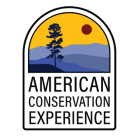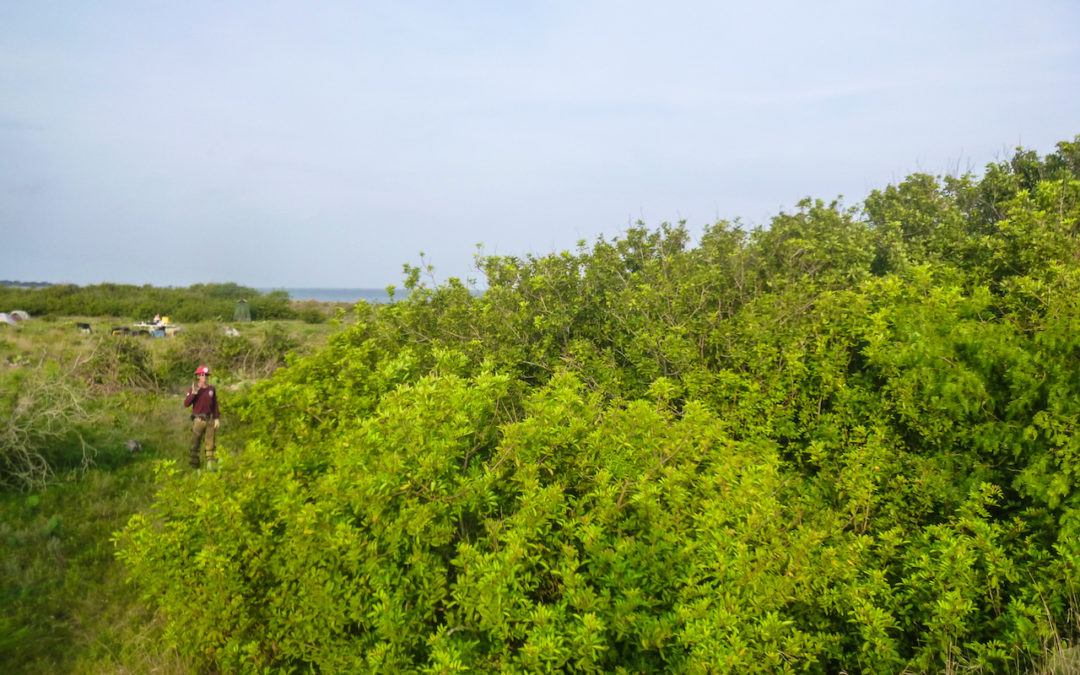This past summer, ACE Texas – Gulf Coast worked with the National Park Service (NPS) to remove invasive Brazilian peppertree (Schinus terebinthefolia) on Padre Island National Seashore, located off the Gulf Coast of Texas. At 70 miles long, Padre Island remains the longest stretch of undeveloped barrier island in the world and boasts a rich cultural history of nomadic hunters and gatherers, Spanish shipwreck survivors and ranchers, among others. Beginning in 1941, Padre Island was established as a Naval Air Station and aerial bombing range, serving as the largest naval pilot training facility in the world through WWII. Today, the island is both a popular tourist destination and crucial habitat for a diverse number of animals and insects, including over 380 bird species and several endangered sea turtles.

The Texas crew, directed by Crew Leader Stefan Brisita, poses in the middle of a fresh-cut stand of Brazilian peppertree before applying chemical treatment.
For this project, the ACE – Texas crew spent a few days on the main island working with NPS botanists and ecologists to search for Brazilian peppertree seedlings in areas that were once completely inundated prior to treatment. Corpsmembers formed a walking grid in order to track and eradicate any new growth of peppertree in its earliest stage. The team gridded almost 200 acres while hand pulling invasive seedlings before moving to the adjacent Pepper Island to begin chemical treatment.
Originally from South America, the Brazilian peppertree, or “Florida holly”, was favored for its ornamental flowers and pink-red berries. While beautiful, these berries cause minor to severe allergic reactions in humans and are extremely toxic to bird species. The tree’s sap can produce skin reactions similar to those associated with poison ivy in sensitive individuals and will release particle toxins into the air when burned. The tree itself is considered highly invasive due to its toxicity to native soil and plants, along with its ability to spread quickly via seed dispersion and create independent basal shoots from stumps and horizontal root.
For the Texas division’s first official backcountry project, the crew took six trips via small boat to transport all necessary gear and supplies to the work site. Members used chainsaws and herbicide to slash and treat invasive Brazilian peppertree via the cut-stump method—a selective, systemic treatment designed to kill the tree at the roots with minimal impact to the surrounding area. Cut trunks and limbs were stacked into piles to avoid further dispersion, as well as to allow for new growth of native vegetation. Over 480 work hours on Pepper Island, the crew took out just under an acre of densely-packed peppertree.
While completing work on Padre Island National Seashore, the Texas corpsmembers also had the unique opportunity to attend an official turtle release with NPS, where 11 juvenile Pacific Green sea turtles (Chelonia mydas) were released to begin their journey into the surf. Padre Island provides safe nesting areas for all five species of sea turtles found in the Gulf of Mexico, including the endangered kemp’s ridley, hawksbill, green, and leatherback sea turtles, as well as the classified threatened loggerhead sea turtle.
To find out more about Padre Island National Seashore’s history, nature, and activities, please visit the NPS website here.






